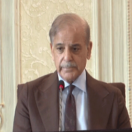By Aadil Nakhoda
Published in Express Tribune on December 11, 2023
KARACHI:
The recent trade statistics published by the Pakistan Bureau of Statistics (PBS) for November 2023 suggest that exports in the first five months of FY24 are hovering at levels similar to those reported for the first five months in the previous fiscal year.
Exports increased slightly from $11.9 billion in the first five months of the last fiscal year to $12.2 billion in the current fiscal year, indicating a roughly 2% increase and little change in this regard.
However, imports continued to decrease from $26 billion in the first five months of the previous fiscal year to $21.6 billion during the same period in the current fiscal year. As a result, the balance of trade has also decreased from $14.1 billion to $9.4 billion.
The current account deficit (CAD) has contracted as well, dropping from $3.1 billion in the first four months of FY23 to $1 billion in the corresponding period of the current fiscal year. Worker remittances decreased from $10.1 billion in the first four months of FY23 to $8.8 billion in FY24. This suggests that import demand is contracting due to import restrictions, impacting economic activities.
The decline in import demand, however, raises concerns about businesses’ ability to import goods, affecting their capacity to generate exports and creating a dilemma for policymakers. It is imperative to revive both exports and economic activity.
Before focusing on some recommendations to improve the environment related to international trading activities, it is important to clear a misconception about the balance of trade.
The balance of trade is an aggregate number that has little significance when calculated bilaterally. Countries tend to report a trade deficit with certain trading partners while reporting a trade surplus with others.
Trade strategies must involve promoting exports to countries with greater export potential, while ensuring a more efficient mix of imported goods into the economy.
Further, as economic conditions improve in the near future, the trade deficit will likely start increasing once imports rise. The contraction in the trade deficit is only temporary as import restrictions are bound to be removed to provide the much-needed vigour to the economy.
Therefore, trade strategies must evolve to ensure that exporters not only have better access to markets but are also able to ensure that they produce their exports using a more effective mix of inputs. Unfortunately, economic uncertainty and import restrictions reduce their ability to improve their level of efficiency.
Some relevant recommendations to improve exporting activities involve not only increasing access to the most efficient input mix for exporters but also providing them with easier access to markets that report the greatest potential. This requires Pakistan to overhaul its trading agreements.
While several counterparts in the Asian region have undertaken steps to ensure better integration into global value chains, Pakistan is clearly a laggard in this regard. The Regional Comprehensive Economic Partnership (RCEP), of which Pakistan is not a member, has pushed boundaries in terms of the level of cooperation that newer agreements can achieve.
The newer agreements involve deeper understandings between countries that may include, but are not limited to, provisions on the digitalisation of trade processes, facilitation and capacity building of small and medium enterprises, e-commerce, economic cooperation, and intellectual property.
For instance, in an era where countries are pursuing cross-border paperless trade to facilitate their businesses, harmonisation and compliance of documents, along with the infrastructure of trade, becomes increasingly important. The Pakistan Single Window is a step in the right direction.
With increasing inflation and the crisis on the external front, it is essential to support and foster pro-competitive pressures that not only help reduce the prices of goods, adjusted for their quality but also increase the potential of firms to innovate. This will require investments in firm capabilities as well as ensuring that the labour force is sufficiently trained.
Participation of small and medium enterprises in international trading activities is essential. With more than five million such units in Pakistan, representing more than 90% of private enterprises, the lack of their participation is one of the root causes of export stagnation.
Unfortunately, a myopic mindset that guarantees protection to certain businesses in targeted sectors to incentivise their exports has little long-term benefits.
Although several countries have reduced their tariffs on the import of goods, the adoption of technical non-tariff measures (NTMs) to curtail the import of dangerous and substandard goods is becoming increasingly prominent.
While major markets are imposing such standards on imports and there is an increasing tendency of poorer and less developed countries to harmonise their standards towards those imposed by the more important markets, Pakistan has relatively low levels of adoption.
The recent ban imposed by the UAE on meat imports from Pakistan is an instance of when failing to meet international standards and regulations has resulted in a significant challenge for the exporters. This is likely to reduce potential, as major export destinations will require Pakistani exporters to meet minimum benchmarks regarding standards and certifications.
Hence, it is critical to ensure that businesses are encouraged to produce according to certain recognised standards and certifications so that they produce their goods according to set procedures and processes matched with certain benchmarks.
Finally, it is essential to ensure that Pakistani businesses have access to the right mix of information on the markets they seek to target. Often, the lack of information makes them uncompetitive.
Digitalisation of trade procedures and processes, investment in trade facilitation infrastructure, and outreach to smaller businesses on improving their access to information portals and resources can help increase exports.




